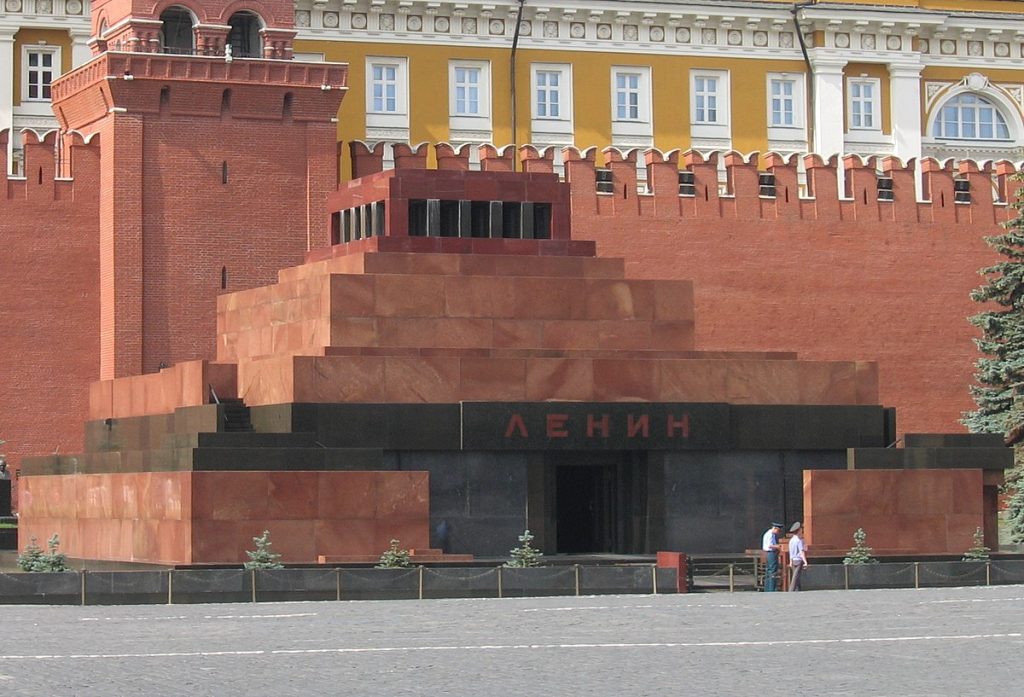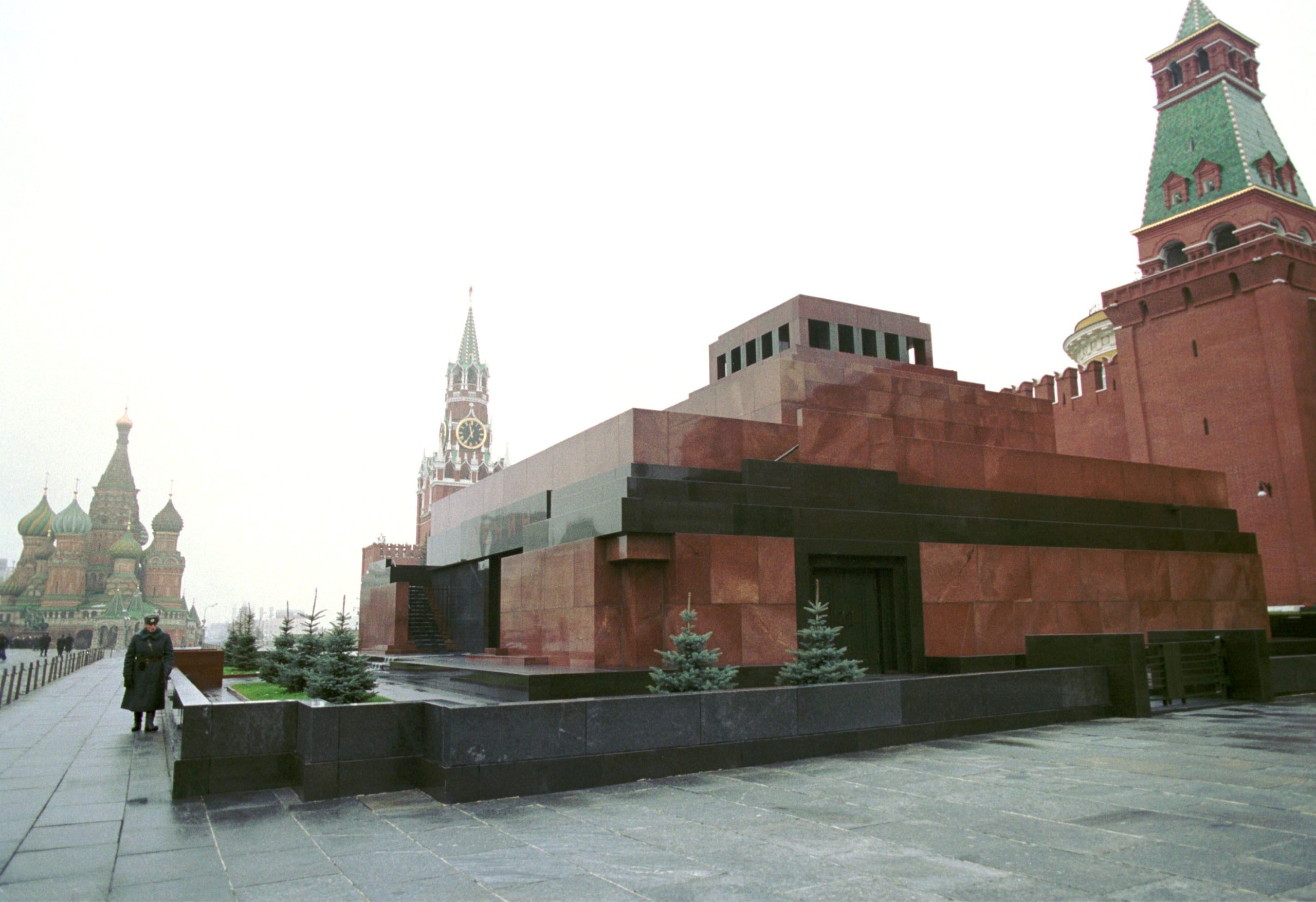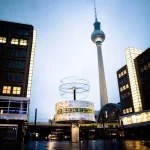Situated at the heart of Moscow’s Red Square, Lenin’s Mausoleum preserves the body of Vladimir Ilyich Lenin, the revered leader of the Russian people. Today, it draws over 2.5 million visitors annually to Russia and Red Square. In this article, we’ll provide you with essential insights about this iconic site.
Historical Formation of Lenin’s Mausoleum
Vladimir Ilyich Lenin passed away in 1924. Despite his wish to be buried in St. Petersburg alongside his mother, Joseph Stalin pushed for his body to be embalmed. Initially, a wooden mausoleum was constructed. During the Great Patriotic War, Lenin’s remains were evacuated to the Ural region. From 1953 to 1961, the mausoleum also housed Vissarionovich Stalin’s body, earning it the temporary name “Lenin and Stalin Mausoleum.” After 1961, during a period of internal Communist Party reassessment, Stalin’s remains were removed, and it has since been known simply as Lenin’s Mausoleum. Russia spends about 1.5 million USD annually to maintain the body and restore the structure, though since 1991, a private fund has covered these costs. While not the only mausoleum globally, its long-term preservation techniques are considered unparalleled. Now, it stands as a top tourist attraction in Russia.
Lenin’s Legacy in Russia
Lenin was a revolutionary, politician, political theorist, and towering figure for the Russian people. He led Soviet Russia from 1917 to 1924 and the Soviet Union from 1922 to 1924, establishing a one-party state under Marxist-Leninist principles guided by the Communist Party. Beyond Russia, he was a champion for the global proletariat. Seen as both a nationalist and an international socialist, Lenin dreamed of a modern, powerful Russia as a model for international relations. Even after his death, he remains the Soviet people’s greatest hero, a 20th-century symbol of “Russianness.” His mausoleum reflects the deep respect of the Soviet people and attracts visitors worldwide to Red Square.
Stories Surrounding Lenin’s Mausoleum
3.1. The People’s Wish to Build Lenin’s Mausoleum
Upon Lenin’s death in 1924, the Soviet government received over 10,000 telegrams and letters from citizens across all walks of life, united in their plea to preserve his body forever for future generations to honor their leader. Though Lenin had wanted a simple burial, the overwhelming public demand swayed the government to opt for long-term preservation. This daunting task intimidated many top scientists, but Professor Sibarski bravely took it on.
3.2. How Is Lenin’s Body Preserved?
Inside the mausoleum, Lenin’s body rests in a transparent crystal coffin, one hand clenched, the other resting naturally on his chest, eyes gently closed. Under soft pink lighting, his forehead appears strikingly lifelike, as if lost in thought or still alive. The mausoleum maintains a constant 16°C (with a variance of no more than 0.7°C), overseen by 12 engineers and doctors working 24-hour shifts. The anti-decomposition techniques are a closely guarded state secret, rivaling Russia’s advancements in aerospace and nuclear energy. For over 70 years under Soviet rule, three generations of scientists have safeguarded this national endeavor.
3.3. Lenin’s Mausoleum During Wartime
One of the greatest feats in preserving Lenin’s body occurred in 1941, when Moscow faced German attacks. Under Stalin’s direct orders, Sibarski and his team had just two days to evacuate Lenin’s remains with minimal equipment and supplies. Throughout the journey, the body was meticulously maintained, returning to the mausoleum in pristine condition. It wasn’t until 1961, amid Communist Party reevaluation, that the site was officially named Lenin’s Mausoleum and secured as it is today.
3.4. Controversies Surrounding Lenin’s Mausoleum
A 2017 survey revealed ongoing debates in Russian society about preserving Lenin’s body: nearly 60% favored burial, while only 24% supported alternatives. For older generations, Lenin symbolizes the struggle for a brighter future. However, when Vladimir Putin became president, he upheld the decision to keep Lenin’s remains in the mausoleum, rejecting burial proposals.
Visiting Hours for Lenin’s Mausoleum
The mausoleum is open on Tuesdays, Wednesdays, Thursdays, and Saturdays from 10:00 AM to 1:00 PM (Russian time). If traveling independently, check the schedule beforehand, as it closes on holidays and during maintenance.
How to Visit Lenin’s Mausoleum
5.1. Visiting from Red Square
From Red Square, enter via the security checkpoint at Nikolskaya Tower in Alexander Garden. Expect a queue, but it moves quickly. Pair your visit with other Red Square landmarks like the Kremlin, the vast plaza, or the State Historical Museum.
5.2. Rules for Visiting Lenin’s Mausoleum
- Leave Bags Outside: Large bags, phones, cameras, and metal objects are prohibited. Pass through a metal detector, and bags will be thoroughly checked.
- No Photography: Photos are strictly banned inside. Security may inspect cameras and demand deletion of any violating images.
- Follow Protocols: Keep moving while viewing Lenin’s body. Remove hats and keep hands out of pockets during the visit.
Conclusion
Lenin’s Mausoleum is more than a resting place for a great leader—it’s a symbol of reverence, gratitude, and pride for the Russian people. Positioned in Red Square, one of Russia’s most visited spots, it’s a must-see when exploring this beautiful country.
Frequently Asked Questions
When is Lenin’s Mausoleum open? It’s open Tuesdays, Wednesdays, Thursdays, and Saturdays from 10:00 AM to 1:00 PM, except on holidays and maintenance days—check ahead.
How much is the entry fee? Admission is free for all visitors.
What else is near Lenin’s Mausoleum? Explore Red Square’s treasures like the Kremlin, State Historical Museum, and more.











